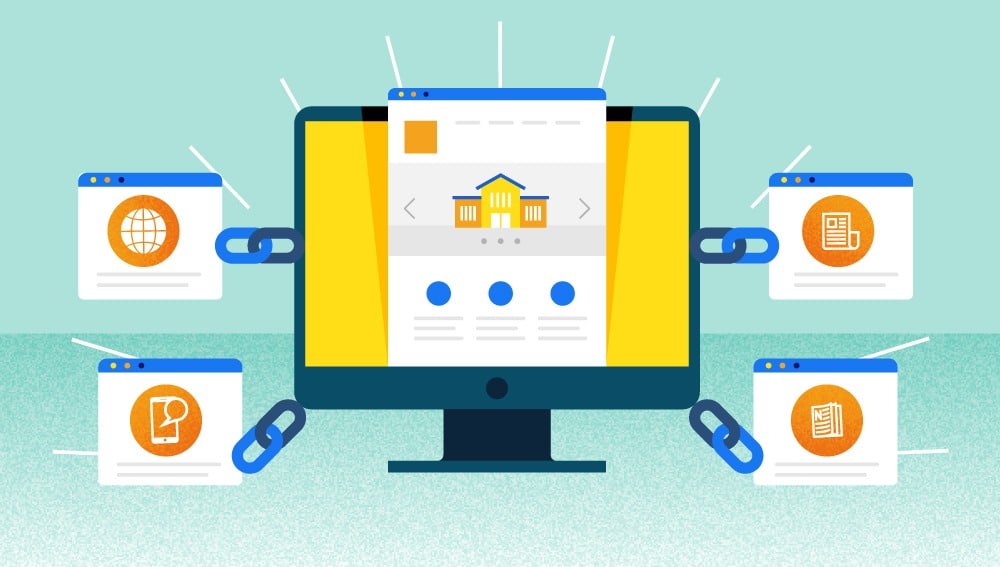7 Steps to Conducting an SEO Audit
Search query: “Online MBA degree programs”
Result: About 218,000,000 results
Google displayed programs at seven universities on its first page of results for the search query above. If your university’s degree program doesn’t appear on the first page of results for queries pertaining to its field of study, your marketing content may not be following SEO best practices. Given that 75% of web users never scroll past the first page of search engine results, failure to understand and follow SEO best practices will make finding your website on Google (or Bing) the digital equivalent of searching for a needle in a haystack.
How can higher education marketers avoid poor online rankings? Learning how to do an SEO audit is a critical first step.
Audits are invaluable because they help you identify areas of opportunity and increase traffic to your site by boosting your organic search presence. Some common missteps higher ed sites make that hurt SEO and the user experience include title tags that are missing keywords or fail to conform to the 60-character limit, missing alt tags for images, and content duplication, which can quickly bust your crawl budget.
To boost your site’s search engine results page (SERP) ranking and get your program noticed by prospective students, our SEO professionals recommend performing frequent SEO audits, which fall into three different categories:
- Technical audits analyze the off-page technical aspects of websites such as site speed, XML sitemap, robots.txt, and other elements of concern to web developers.
- On-page audits focus on content and analyze on-page elements such as header tags, title tags, keyword optimization, and user experience.
- Blog audits evaluate blog content for user intent, structure, keyword optimization, and other on-page factors.
All three types are vital to ensuring your university ranks high in the SERPs. While the prospect of performing one audit — let alone three different types of audits — may be daunting to marketers who aren’t SEO specialists, our SEO experts have broken down the process into seven steps to improve your site. A virtual assistant can help you do an SEO audit along with other different kinds of tasks that you might want to outsource.
1. Benchmark Your Current Site Performance
Before you embark on an SEO audit, it’s important to understand how your current site and webpages are performing against your competition. Start by looking at metrics such as page rankings, search traffic, conversions, backlink profile, and technical SEO performance. Not only do these metrics provide insight into how your site is currently performing and identify areas that need improvement, but the data you collect will serve as a basis for comparison for future SEO performance analysis after you complete your audit and implement best practices.By comparing your site’s SEO performance against best-in-class competitors — those programs that consistently rank high in Google SEPRs — you can better understand where and why rival degree programs or universities are outperforming you.
Fortunately, many SEO audit site tools are available — Ahrefs, MOZ, and SEMrush to name a few — to help marketers benchmark a site’s SEO performance. For example, SEMrush’s position tracking tool enables users to collect and monitor accurate Google ranking data for any domain, subdomain, or URL for keywords tracked on a daily basis.
2. Crawl Your Site for Potential Errors
The adage “you need to crawl before you can run” is as true for SEO as it is for us bipeds. The first step to analyzing how your site is performing is to crawl it using a web crawler (aka a web spider or web robot), which is simply a program or automated script that crawls the web in a methodical way, just as Google does.Google’s ability to crawl and index a website is fundamental to how that website ranks on Google’s SERPs, so crawling your site is critical for discovering how it’s performing and for diagnosing problems. The digital marketing experts at Learn Inbound recommend checking how well your site ranks for brand terms and long-tail phrases or keywords — those phrases or keywords that generally get less search traffic but usually have a higher conversion rate because they’re more specific. They also recommend checking to see if any of your URLs have been excluded from Google’s index and, if so, why. Web crawlers are also handy for automating maintenance tasks on a website, such as checking for broken links or validating HTML code.
Two popular tools for crawling the web are DeepCrawl and the Screaming Frog SEO Spider. Both quickly crawl key information on a website and identify any flaws or issues that need to be remedied. These tools and others like them can help marketers quickly troubleshoot their sites for indexing issues.
3. Parse the Crawl to Help Interpret the Data
Once a spider is done crawling your website and pages, it’s time to parse the crawl to understand the data. Parsing simply refers to the automatic gathering and extraction of information from online resources. As your program likely has dozens, if not hundreds, of webpages, breaking down the data pulled from the crawl is a formidable task.The data parsing process can get complicated, but there are tools for this, too. Parser tools for SEO specialists include:
- Google Spreadsheet: This free tool can help extract elements such as title, description, keywords, and h1 headers and is best used for low-volume tasks, according to Netpeak.
- Web Scraper: This free tool is a browser extension for Chrome.
- Netpeak Spider: This custom search and extraction tool can parse data from HTML pages and find error 404 pages, as well as pages with missing title tags.
4. Conduct an Analysis to Find New Opportunities
Once a website and pages have been crawled, and the data parsed and interpreted, it’s time to identify opportunities for improvement (i.e., action items). Each of the three types of audits discussed above will likely uncover errors that can be addressed to boost your program’s search presence.An on-page and technical SEO audit we performed for a client identified critical content elements that were negatively affecting the site’s SEO performance. Here are a few examples from our findings:
On-page audit:
- Title tags — not optimized for character limit
- Alt tags — missing from some images
- Navigational elements — footer menu not optimized for UX and SE bot crawlers
- Meta descriptions — either missing from pages or exceeding the character limit
Technical audit:
- Redirect issues — 404 and 500 errors
- URL structure — URL hierarchy not correlated with the degree level/type of program
- Page speed — improperly sized images, contributing to longer page load times
- Duplicate content — both http and https versions of body content on some pages
Blog audit:
- Missed opportunities — areas to increase organic traffic and enhance user experience
5. Prioritize Each Action Item
To get a greater and more rapid return on audits, higher ed marketers should prioritize action items and implement those likely to make the biggest impact in SERPs, focusing first on easy-to-fix on-site issues.Of the issues identified in the audits above, some affect SERP ranking more than others. For example, given that title tags and alt tags are high-priority items, whereas navigational elements and meta descriptions, while important, rank as medium-to-high priority, higher ed marketers may want to tackle the easy-to-fix tag issues first.
Make SEO for Mobile a Top Priority
Higher ed marketers should prioritize action items for their mobile sites. As mobile has become the preferred channel for browsing the internet, Google is focusing heavily on the mobile user experience and, beginning in March 2021, will be rolling out its page experience ranking signal along with its mobile-first indexing update. The pending mobile-first switchover means the search engine giant will be indexing only the mobile version of your website, so it’s imperative that websites and pages be optimized for browsing on mobile devices.
6. Implement Your Action Items
Now it’s time to get to work. Typically, developers are called in at this stage to help implement SEO fixes identified by technical audits.Marketing managers and SEO analysts should be made aware of on-page and blog elements to pay attention to, such as best practices for target keyword placement, adhering to character limits in meta descriptions (150-160 characters) and title tags (60 characters at most), and tailoring blog content so that it’s relevant to the target audience. Also, be sure to delete underperforming pages — those with little or no organic search traffic — from your site, as they can drag down your site’s performance.
Webpage and user experience designers should also be brought in to optimize navigational elements to increase click-through rates, such as by updating the footer menu to include top conversion-focused items that users can easily navigate to. Lead forms should be prominently displayed at the top of the webpage so they’re easy for users to find and click on.
7. Monitor Outcomes to Measure Success
To evaluate audit success and ensure your website continues to score high in SERP rankings in the future, monitoring SEO performance on an ongoing basis is vital. To that end, audits should be performed frequently.Google Analytics is a powerful tool for monitoring the organic traffic to your website. It can help keep track of engagement metrics such as conversion rate, time spent on page, pages per visit, and bounce rate. These insights into visitor behavior on your site are an indicator of website health and can alert marketers if the site’s SERP ranking is slipping. Other useful tools include Ahrefs, Google Search Console, and SEMrush.
The Goal Is Showing Up
Woody Allen said, “80% of success is just showing up.” Showing up on the first page of Google or Bing is the dream of digital marketers everywhere. The first step toward reaching that goal is conducting an SEO audit to determine where you are so you can get where you want to be. If you feel ready, check our piece on How to Get Your Website on the Top of Google.
Ready to Conduct an SEO Audit? Find Out How Our SEO Experts Can Help
Conducting an SEO audit can be a mystifying process. The SEO experts on Circa Interactive’s higher education lead generation team can identify areas of opportunity to boost your program’s search ranking so you connect with ideal prospective students. Circa partners with dozens of accredited universities to help their institutions and degree programs stand out in a crowded, competitive marketplace. Contact us today or visit our SEO page to learn more about how we can help your university generate high-quality leads and meet its enrollment goals.



